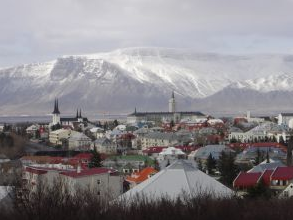
Iceland is the best country for gender equality for the fifth year running.
The annual Global Gender Gap report has named Iceland as the best country in which to be a women, with the narrowest gap between men and women. Iceland has maintained its number one position for the past four years. Finland is in second place, with Norway and Sweden in third and fourth respectively. Fifth place was taken by the Philippines, the highest ranking Asian country.
The World Economic Forum (WEF) report looks at four ‘pillars’ when assessing the gender gap – Economic Participation and Opportunity, Educational Attainment, Health and Survival, and Political Empowerment.
Out of the 110 countries featured in the report since it began in 2006, 95 have improved and 14 have gotten worse, only Sweden remains the same. This can be partly attributed to the fact, for many countries, things can only get better. The gender gap has narrowed for different reasons. For example, in Latin America, several countries have jumped up the rankings as more women were elected to political office.
This trend was mirrored in Europe, with many scores improving due to more women taking leadership roles. Sweden, for example, has one of the highest percentages of women in parliament with 44.7%. The Nordic nations, excluding Denmark, have closed 80% of their gender gap, and while men and women are still not fully equal, they serve as models for other countries.
The Nordic countries’ domination of the top five isn’t surprising, but the Philippines coming in fifth place may seem odd to some. Despite only coming 16th in the world in terms of percentage of women in the workforce, the quality of female contribution is high. Women make up 53% of senior leaders, the wage gap is relatively low, and a woman has been head of state for 16 out of the last 50 years. The Philippines has also largely closed the gap for health and education. As pointed out in the Harvard Business Review, this is a reminder the report tracks gender gaps, and not development.
New Zealand was the only other country in the Asia Pacific region to feature in the top ten. It has fallen one place since 2012 due to a drop in wage equality. In the top ten the only other nation outside Europe to appear is Nicaragua in tenth place, the highest ranked Latin American country overall. Israel is the best country for women in the Middle East and North Africa region, and Colombia was the biggest overall achiever, moving up 28 places to rank 35th overall.
Globally, women represent around 50% of the population, but nowhere do they receive half the opportunities available. The situation for women is improving, but there is still some way to go. The WEF is encouraging countries to exchange information and help each other to close the gender gap.
“One of the the things the World Economic Forum is trying to do is create that exchange. To accelerate change, you need to have that sharing of information between companies,” Saadia Zahidi, a Senior Director at the WEF told the Harvard Business Review
“Thus far, [progress] may not have been based on information exchange but it will have to be in the future — if we want to avoid reinventing the wheel.”